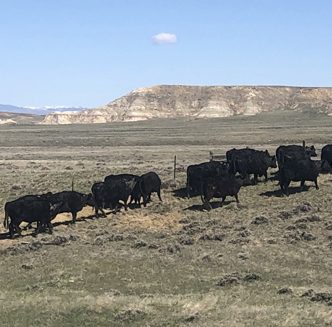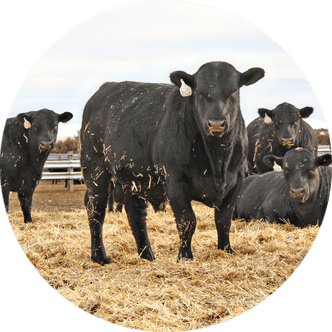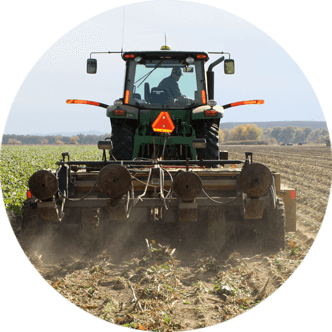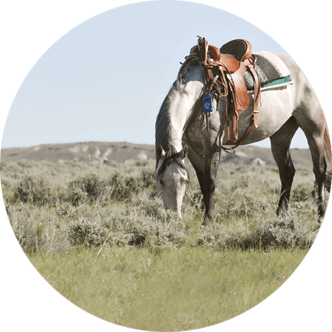The dollars and sense in silage bagging highlighted
Improved feed management involves a lot more than how to store it. Expanding one’s thinking can save tens of thousands of dollars each year while enhancing nutrition, herd health and production.
Feed costs are the largest expense for ranchers and cattle feedlot operators, typically making up 50 percent or more of total operating costs.
Bagging silage has proven to be an efficient way to reduce feed waste, but when it was further examined how bagging can impact the entire feed management and handling process, even greater savings were discovered.
While all cattle operations are different, these discoveries may open producers’ eyes about how much they can save.
Starting with the equipment, new innovations can produce higher-quality feed at a lower cost. This is particularly true for silage, a preserved forage made from energy-rich crops such as corn, alfalfa, sorghum or grass which undergo fermentation under anaerobic conditions.
While silage has traditionally been stored in silos, bunkers, piles or pits, more cattle operations are shifting to bagged silage to maintain optimal fermentation and ensure long-term feed quality.
This transition requires investing in bagging equipment, which initially can be more expensive than building a concrete pad or pit. As a result, these cattle producers evaluated both the initial purchase price and the expected reductions in feed loss.
But this evaluation is limited given the broader financial advantages, which include better nutrition preservation, reduced health risks, improved breed-back times, increased storage flexibility, lower labor requirements and increased potential revenue opportunities.
This is where the conversation shifts from simply justifying an equipment purchase to understanding its long-term financial impact.
By recognizing the ripple effect across an entire operation and how the financial benefits align, the decision to bag silage easily justifies the investment.
Reducing silage loss saves operations money
In addition to grazing, a typical U.S. ranch with 100 beef cattle might use between 1,500 and 2,500 tons of silage annually. Larger operations with 1,000-plus cattle can require 15,000 to 25,000 tons per year.
One of the main disadvantages of storing silage using traditional methods like piles, pits and bunkers is the considerable risk of spoilage and loss, which can amount to as much as 30 percent. This combined loss is often referred to as “shrink.”
“The problem with conventional silage storage methods is excessive exposure to oxygen, which leads to rapid silage deterioration. Standard practice is to leave the face of the pile, pit or bunker open for feeding. This leaves hundreds of square feet exposed and deteriorating before it can be fed,” says Steve Cullen, president of Astoria, Ore.-based Versa Corporation, a global leader in agricultural silage bagging and handling.
A key advantage of properly bagged silage is the smaller feedout face, which reduces daily exposure to air, thereby minimizing spoilage. This design ensures silage is consumed more quickly, preserving its freshness and maintaining its nutritional value.
Harvesting is a time-driven process. As ranchers rush to protect their valuable crop, tractor packing time is often cut short, leaving oxygen still in the pile. With silage bagging, the oxygen is removed almost instantly and fermentation begins promptly.
Even at a conservative 15 percent, the savings derived from reducing shrink are substantial.
Whether cattlemen must harvest additional feed each year or purchase more to offset losses, annual feed loss accrues year after year to reduce long-term profitability.
More retained nutrients equals less feed needed
The higher-quality silage produced in bags further reduces feed costs by providing greater nutrient density. Limiting oxygen exposure reduces the risk of yeast and mold growth.
These contaminants consume essential carbohydrates and proteins, leading to nutrient losses, lower digestibility and potential mycotoxin production which can harm cattle health.
“The feed is more nutritious because we are not losing nutrients to those spoilage microorganisms, and we are not introducing contaminants into an animal we are asking to grow rapidly,” explains Dr. Keith Bryan, technical service manager of silage and dairy for global biosolutions company Novonesis.
“Animals eat to meet their energy and nutrient needs. So, if the silage is suboptimal and retains only 90 percent of its full nutrient density during the ensiling process, then we have to feed 110 percent of the silage to get the same total nutrients into the animal,” adds Bryan.
A correctly managed silage bag also produces higher levels of lactic acid, which enhances digestibility and translates to better nutrient absorption. Lactic acid plays a key role in improving feed efficiency, and studies suggest it is almost directly absorbed into cattle’s bloodstream along with essential nutrients.
Improved feed management brings additional savings
Bagging becomes a valuable tool for cost-effective cattle management. The increased flexibility and versatility reduces labor, enhances safety, eliminates the need for additional equipment and allows for the storage of a broader range of high-value feed options.
One of the primary benefits of using a bagging machine is the ability to store and manage small quantities of different feed types such as alfalfa, corn, grass-legume mix, sorghum or oats.
If needed, cattlemen can even designate sections within a single bag for different crops, such as marking one portion for wheat and another for corn. This method allows for greater versatility in feed storage without the inconvenience of physically separating crops in a silo, where it would be challenging to determine where one type starts and another ends.
Placing various crops and cuttings into bags offers cattlemen the flexibility to create silage and mixed rations tailored to their specific needs and even the cow’s stage of development.
A major advantage is bagging feed is much more forgiving when it comes to moisture content. Sealed bags preserve silage quality and sustain optimal fermentation conditions even amid unfavorable circumstances such as exposure to rain, moisture, excessive dryness or prolonged storage.
Bagging provides the flexibility to start and stop as needed, especially in unpredictable weather. Unlike traditional methods which risk missing peak nutritional value due to delays, bagging allows cattlemen to pause and resume without sacrificing feed quality.
Feed moisture levels can vary, affecting the daily rations. By blending feed from multiple bags, producers can minimize these fluctuations, ensuring a more consistent nutrient supply.
Bagging also is an effective storage method for high-moisture corn silage, particularly for snaplage, earlage and other head-chopped concentrate feeds. Snaplage and earlage consists of the entire ear – cob, kernels, husk and part of the shank – harvested and ensiled at an optimal moisture range of 32 to 40 percent.
Rather than relying on expensive dried grain, producers can bag head chops from barley, wheat or ear-leaf snaplage as a near pound-for-pound replacement, reducing feed costs and maximizing on-farm resources.
These high-energy concentrates rival dry grain in nutrition, making them an efficient alternative for cattle.
Expanded storage options go beyond silage
Expanding bagging beyond silage improves efficiency, reduces costs and can even create revenue streams from materials which would otherwise go to waste.
For instance, when an upright silo reaches full capacity, any additional grain must be stored elsewhere. In many cases, excess corn is simply piled outside, exposed to the elements, which can lead to spoilage and a decline in quality.
Rather than selling immediately when supply is high and prices are low, cattlemen can store their surplus in bags and wait for demand to rise, maximizing their returns. This storage flexibility offers a financial advantage by reducing the impact of oversupply on market prices.
Many cattle operations already bag corn and hay but may not realize they can do the same for byproducts like beet pulp, tomato pulp and spent grain – ethanol and brewing byproducts.
These byproducts offer cost-effective feed options, often available at little to no cost, but spoil quickly without proper storage.
Regardless of the material stored, bagging can preserve the contents for up to three years with proper management, reducing waste and ensuring a stable feed supply.
Creative Financing, revenue opportunities
The portability of bagging equipment allows relocation to different sites, optimizing usage and allowing cost-sharing or reduced investment expenses.
Shared ownership among neighboring farms helps lower the financial burden by splitting acquisition and maintenance expenses. By leveraging its mobility, cattlemen can also use the bagger for local contract work, offering silage bagging services to other operations. This can serve as an additional income stream or a way to reduce overall harvesting costs.
When adding it all up, silage bagging presents a compelling financial advantage for cattle operations, saving 30 to 50 percent while transforming feed management into a more efficient, cost-effective and profitable practice.
Cattlemen can save tens of thousands of dollars annually while maintaining higher nutrient retention, extending feed life and improving herd health. The ability to better control feed quality and minimize spoilage not only enhances overall production but also leads to improved reproductive efficiency, reduced veterinary costs and lower labor expenses.
Additional uses for bagging saves money and adds new revenue streams.
Overall, these cumulative benefits contribute to a more sustainable and financially resilient operation.
Carlo Chatman is the media relations specialist for Power PR, a media relations firm dedicated to helping industrial companies. For more information, visit powerpr.com.





